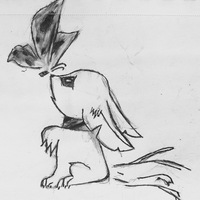
Квадрат со стороной 1993 разделен прямыми, параллельными его сторонам, на единичные квадратики.
Первоначально в левом нижнем квадратике стоит фишка. Двое школьников играют в такую игру. Ходят по очереди. За ход разрешается передвинуть фишку на любое количество квадратиков вверх или вправо. Школьник, который не может сделать ход, проигрывает. Кто выигрывает при правильной игре: начинающий или его партнер? !!! (Не тупо скажите, что выиграет второй, а напишите решение с использованием 1993) 0
0
 0
0
Ответы на вопрос
 Внимание! Ответы на вопросы дают живые люди. Они могут содержать ошибочную информацию, заблуждения, а также ответы могут быть сгенерированы нейросетями. Будьте внимательны. Если вы уверены, что ответ неверный, нажмите кнопку "Пожаловаться" под ответом.
Внимание! Ответы на вопросы дают живые люди. Они могут содержать ошибочную информацию, заблуждения, а также ответы могут быть сгенерированы нейросетями. Будьте внимательны. Если вы уверены, что ответ неверный, нажмите кнопку "Пожаловаться" под ответом.

Выигрывает второй школьник.
Его стратегия такова: в ответ на любой ход начинающего он ставит фишку на клетку, расположенную на диагонали, идущей из левого нижнего угла квадрата в правый верхний.
 0
0
 0
0

Problem Analysis
We have a square divided into unit squares, with a token initially placed in the bottom-left square. Two players take turns moving the token either up or to the right by any number of squares. The player who cannot make a move loses. We need to determine which player will win if both play optimally.Solution
To solve this problem, we can analyze the game step by step and look for patterns. Let's start by considering smaller squares and see if we can find any insights.For a 1x1 square, the starting player cannot make a move, so they lose.
For a 2x2 square, the starting player can move the token to the top-right square, leaving the second player with no moves. Therefore, the starting player wins.
For a 3x3 square, the starting player can move the token to the top-right square, leaving the second player with two possible moves: either move up or move right. In either case, the starting player can mirror the second player's move and win on the next turn. Therefore, the starting player wins.
For a 4x4 square, the starting player can move the token to the top-right square, leaving the second player with three possible moves: move up, move right, or move diagonally. In any of these cases, the starting player can mirror the second player's move and win on the next turn. Therefore, the starting player wins.
From these observations, we can see a pattern emerging. For any square with an odd number of sides, the starting player wins. For any square with an even number of sides, the second player wins.
Now, let's apply this pattern to the given square with sides of length 1993. Since 1993 is an odd number, the starting player will win if both players play optimally.
Conclusion
In the given game with a square of side length 1993, the starting player will win if both players play optimally.Note: The solution provided above is based on the analysis of smaller squares and the pattern observed. It is always a good practice to verify the solution using a computer program or by playing the game manually.
 0
0
 0
0
Топ вопросов за вчера в категории Математика
Последние заданные вопросы в категории Математика
-
Математика
-
Литература
-
Алгебра
-
Русский язык
-
Геометрия
-
Английский язык
-
Химия
-
Физика
-
Биология
-
Другие предметы
-
История
-
Обществознание
-
Окружающий мир
-
География
-
Українська мова
-
Информатика
-
Українська література
-
Қазақ тiлi
-
Экономика
-
Музыка
-
Право
-
Беларуская мова
-
Французский язык
-
Немецкий язык
-
МХК
-
ОБЖ
-
Психология
-
Физкультура и спорт
-
Астрономия
-
Кыргыз тили
-
Оʻzbek tili




















